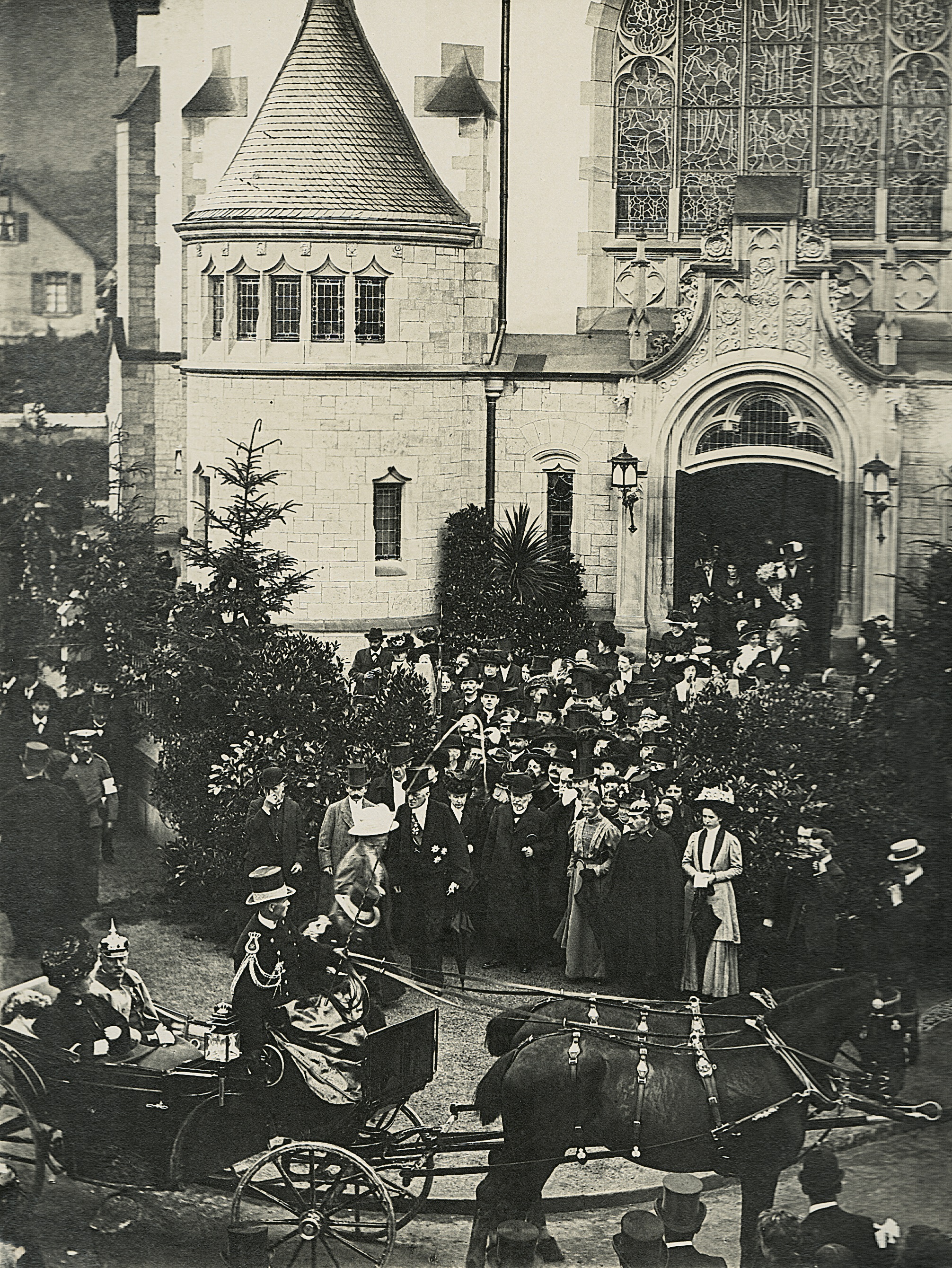 |
 |
 |
History of Friedenskirche („Peace Church“)
Until „Peace Church“ was built and inaugurated in 1910, the nearby St. Vitus church served as a simultaneum church in which both Roman Catholic and Protestant services were held. In those days, ecumenical activities were rare but both religious communities had good relations with one another. Nonetheless, in the middle of the 19th century, the parishioners began to express the wish to have their own new church. The old church was in a poor state and both parishes were witnessing a large growth in numbers, particularly after the village became part of Heidelberg in 1903. The Protestant community set about dissolving the simultaneum, looking into the financing of a new church, finding a suitable site and planning the new building.
The simultaneum was eventually dissolved in 1907 after land had been bought in 1906 from Raban von Helmstatt, the owner of the neighbouring castle Tiefburg. The master of works was the renowned and experienced architect Hermann Behaghel (1839-1921), who, in his long career, designed over 79 churches and rectories as well as other buildings in Heidelberg and the area, including the synagogue in Heidelberg.

Building sketch of the church and rectory Winter 1908/09 (Photo: Friedensgemeinde)
Behaghel drew up numerous sketches and detailed plans for the new church and its surroundings, discussing these closely with the church authorities and with the community. The final plan included seating for 1174 persons, the linear alignment of altar, pulpit and organ as required by the Wiesbaden Programme of 1891 and low pressure steam heating. Excavation work began in 1908 and the foundation stone was laid on 14th June 1908.
 Construction status of the Peace Church from 1910
Construction status of the Peace Church from 1910

Construction status of the Peace Church from 1910
The total cost of the building was around 400,000 Marks, which was a huge amount of money at the time. The community itself had to fund 100,000 Marks, which it raised either by collecting money from households, from church tax introduced in 1906 and above all with a loan from Karlsruhe Life Insurance Company. The Protestant Women’s Association collected money for the large pictorial window and many parishioners and families in Handschuhsheim made generous contributions in one way or another.
At a meeting of the parish community on 11th May 1910 it was decided unanimously to name the new church “Peace Church”. The church was inaugurated on 29th June 1910 with great pomp in the presence of the Grand Duke of Baden, Frederick II and his wife Hilda.

Inauguration in the presence of the Grand Duke and Duchess of Baden, 29th of June 1910 (Photo: Tiefburg archives)
The years that followed were the turbulent years of the Weimar Republic, the seizure of power by the National Socialists and World War 2. The church and the work of its pastors were not unaffected by these difficult times. After 1945, the large influx of refugees needed to be integrated into the community.
By 1960, Peace Church was in desperate need of refurbishment and so in the year of its 50th anniversary, an extensive renovation project was started. A large concert organ made by the Walcker company was installed, along with a new altar, pulpit and font, designed by Edzard Hobbing. The pulpit was moved to the left of the altar and the font to the right. Almost all of the original windows were retained. The stone plaques commemorating the fallen were removed from the inside of the church and placed on the outside wall.

After the renovation in 1960 (Photo: Friedensgemeinde)
At the beginning of the 1970s, the exterior of the church was renovated extensively without changing its original appearance. The roof tiles were replaced, the stone was cleaned and the building was repainted. In 1981 a ramp was installed to enable wheelchair access and in 1984 the large glass windows were restored.

External renovation (Photo: Tiefburg archives)

Interior 2012 (Photo:GG)
Around 2010, 50 years after the first major renovation project, the Heidelberg architects Loebner, Schäfer and Weber were responsible for redesigning and planning the next renovation of the interior of the church. There was a huge amount of conflict and discussion within the community, particularly with regard to the opening of the “rood screen” behind the altar to build an open stairway, having a modern altar and pulpit once again in linear alignment with the organ as in the original church interior, and replacing the pews with individual chairs. After this extensive renovation, the church was reopened at Harvest Festival in 2012 and since then the discussions on the redesign have quietened down.
Despite all these changes, Peace Church has always been at the centre of vibrant community work and varied and high-class church music. (bm)